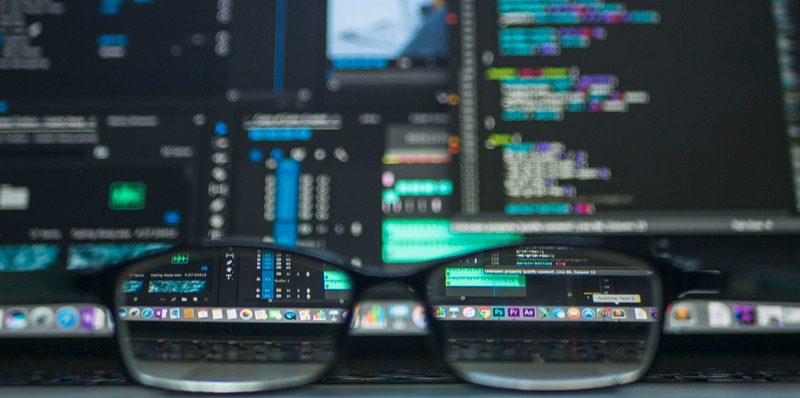Amid the rapid advancements in technology and competitive market conditions, software developers are under constant pressure to deliver high-quality, secure code swiftly. This acceleration in development often leads to compromised cybersecurity practices, embedding potential vulnerabilities within software. While the human element remains critical in coding, Artificial Intelligence (AI) tools are emerging as crucial aids in boosting the security of new code. This article explores the multifaceted role AI can play in revolutionizing secure coding in software development.
The Mounting Pressure on Developers
Developers today are faced with the dual challenge of meeting tight deadlines and ensuring top-notch security in their code. This pressure often results in oversight of critical security measures, introducing vulnerabilities such as privilege escalations, back-door credentials, possible injection exposures, and unencrypted data. As the demand for faster delivery grows, the need for effective tools that can assist developers in maintaining security without compromising speed becomes increasingly evident.
Furthermore, the complexity of modern software development involves integrating multiple systems, external libraries, and numerous lines of code, making manual vulnerability detection a daunting task. The traditional methods of code review and testing, while essential, are no longer sufficient to address these challenges promptly and thoroughly. Vulnerabilities can easily slip through the cracks, potentially compromising the security and integrity of the entire software system. It is in this context that the introduction of AI tools into the developer’s toolkit shows significant promise for improving security without sacrificing development speed or quality.
AI’s Role in Vulnerability Detection
AI tools have begun to reshape the landscape of software development by offering rapid and efficient solutions for vulnerability detection. These tools can scan code repositories continuously and provide instant feedback on potential security issues, allowing developers to address them early in the software development lifecycle (SDLC). By promoting a ‘security-first’ mindset, AI tools enhance developers’ defensive capabilities, making it easier to maintain secure coding practices even under tight schedules.
Moreover, AI-powered tools are adept at recognizing patterns and anomalies within the code, which might be missed by human eyes, especially in extensive codebases. They can flag suspicious code snippets, suggest corrections, and even automate the remediation process to a certain extent, thus significantly reducing the time and effort required to maintain security. This ability to quickly pinpoint and address vulnerabilities helps prevent minor issues from escalating into significant security breaches, protecting both the development process and end users from potential threats.
The Necessity of Human Insight
Despite the significant advantages that AI tools offer, the critical need for human oversight cannot be overstated. AI tools, while capable of identifying numerous vulnerabilities, lack the contextual understanding necessary to fully grasp complex project requirements. Elements such as design and business logic flaws, compliance requirements, and threat modeling are areas where human judgment is indispensable. Developers play a critical role in interpreting and applying AI outputs within the broader context of their projects.
Additionally, AI systems are prone to what is known as ‘hallucinations’—instances where the AI provides incorrect or overly confident answers. In such cases, developers must scrutinize the AI-recommended solutions to ensure they align with the broader context of the project. Human expertise ensures that nuanced security challenges are addressed comprehensively, rather than relying solely on AI outputs. This collaborative approach ensures that the strengths of both AI and human insight are leveraged to produce secure, high-quality code.
Enhancing Training and Best Practices
To leverage AI tools effectively, developers must undergo rigorous training programs that integrate secure coding principles with the responsible use of AI technologies. Hands-on training sessions that focus on real-world scenarios can help developers understand both the capabilities and limitations of AI tools, fostering a deeper appreciation for secure coding. This practical experience is essential for building proficiency and confidence in using AI tools to enhance security in their development workflows.
Establishing standardized metrics for evaluating developer proficiency in using AI tools can provide valuable insights into the training’s effectiveness. By tracking their ability to identify and rectify vulnerabilities over time, organizations can enhance their overall security posture and ensure that developers are well-equipped to handle evolving security threats. Continued education and regular updates to training programs are necessary to keep pace with advancements in AI and cybersecurity trends, ensuring that developers remain adept at using state-of-the-art tools and techniques.
Innovation in DevSecOps Solutions
The integration of AI into DevSecOps practices represents a significant opportunity to optimize the software development process without sacrificing security. Innovative DevSecOps solutions that incorporate AI technology can expand issue visibility and expedite resolution capabilities, ultimately benefiting both security and efficiency. By embedding AI within the DevSecOps framework, organizations can ensure that security considerations are seamlessly integrated throughout the development lifecycle, rather than being an afterthought.
These solutions must be designed to facilitate continuous monitoring and real-time feedback, ensuring that security remains an integral part of the development pipeline. By streamlining processes and automating routine tasks, AI can free up human resources to focus on more complex security challenges and strategic initiatives. This balance between automation and human expertise allows organizations to maintain a high level of security without compromising the speed and agility of their development processes.
Human-AI Collaboration: Finding the Balance
In today’s landscape of rapid technological advancements and fierce market competition, software developers are experiencing immense pressure to produce high-quality, secure code at an accelerated pace. This rush often results in compromised cybersecurity measures, leading to potential vulnerabilities within the software. Although human expertise is invaluable in coding, Artificial Intelligence (AI) tools are increasingly becoming essential in enhancing the security of newly developed code. These AI tools act as vital complements to human efforts, capable of identifying and addressing security flaws that could be missed during manual reviews. They can automate repetitive tasks, analyze large datasets for patterns, and provide real-time feedback, significantly improving the overall security posture of the application. This article delves into the diverse ways AI is transforming secure coding practices in software development, making it both an indispensable ally and a powerful tool in the fight against cyber threats.

